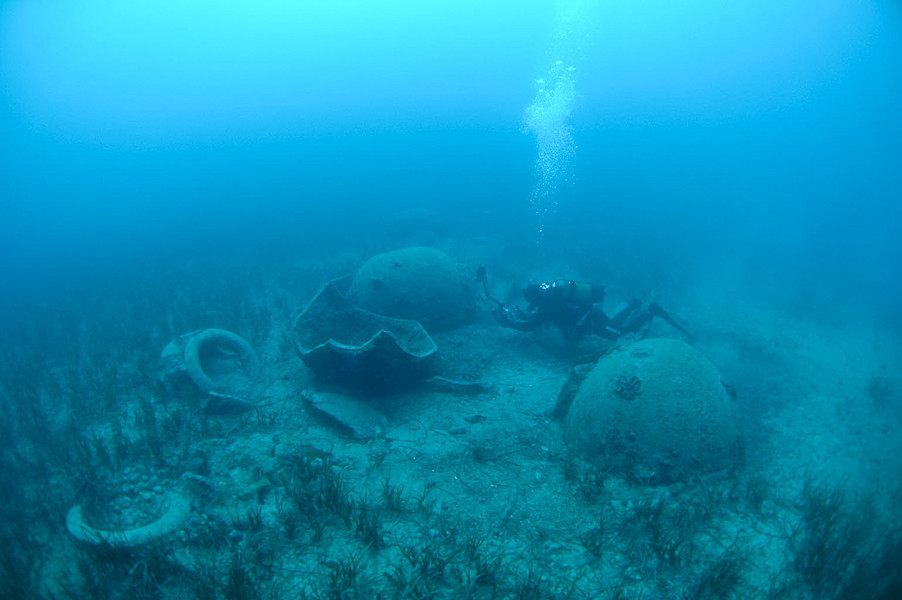
ANCIENT MERCHANT – SAILING BOAT WITH DOLIA
DIVE SITE
Added by: H2O Globe
Location: ANCIENT MERCHANT – SAILING BOAT WITH DOLIA (42.60987°, 18.20699°)
Added by: H2O Globe
Location: ANCIENT MERCHANT – SAILING BOAT WITH DOLIA (42.60987°, 18.20699°)
DEPTH: 30 - 35 m
SKILL: Advanced
Merchant – sailing boat; Italy - Lazio
Period: end of 1st century B.C.
Sunk: The cause of sinking has not been exactly determined, but it is assumed that rough seas breached the overloaded boat which then sank.
Dimensions: length about 22 m
Coordinates: 42.61000° N, 18.20500° E
Location: Southern coast of the islet of Supetar.
Access: 2/5 access is possible only by boat
Visibility: 3-4/5 mostly good
Current: 4/5 mostly weak
Flora and fauna: 3-4/5 varied life on and around the wreck, octopuses are common, sometimes small rays and dusky groupers
HISTORY:
At the end of the 1990’s the opinions of experts which deal with the exploration and protection of the remains of cultural heritage were mostly pessimistic about the possibility of discovering new underwater sites in the coastal areas. These fears were based on the decades of devastation during which dozens of shipwrecks from Antiquity were completely looted especially those at shallow depths and close to populated settlements. Thanks to the divers from Cavtat a site of dolia and a large site of North African amphorae were first found, and then one more ancient boat with amphorae and finally a sailing ship from the end of the 18th century armed with cannons. All the sites are located within a 0.5 mile radius which creates the possibility for the preparation and organisation of an underwater archaeological park adapted for the visits of tourist divers.
One special feature is the underwater site which was officially discovered in 1996, and represents the only preserved site of large ancient ceramic vessels for transporting cargo - dolia on the eastern coast of the Adriatic. It is an untouched site at an accessible depth at which it is possible to see eight whole and five broken dolia. The site covers an area of 10 x 20 metres. In a brief investigation traces of the sunken boat have not been noted though the discovery of the dolia can simply illustrate the unproven shipwreck. Dolia were already known of as a way of transporting cargo in the period of prehistory. In Antiquity they were often used on Roman boats in the 2nd and 1st centuries B.C. In the 1st century they became the main method of transporting cargo, and boats which carried them took on the characteristics of ancient tankers. Their capacities ranged from 1,500 to 3,000 litres. The dolia at Cavtat date from the 1st century, and their estimated capacity ranged from 1,200 up to 1,400 litres.
Similar findings of dolia worth mentioning were found near Vis and Murter. Also especially interesting is a dolium found in Kaštela Bay located at a shallow depth and close to the shore. On it are drilled holes that allowed the change of seawater so it is assumed that it was used for the preservation of crustaceans or fish.
CONDITION OF THE SITE AND DIVING:
The site is located 200 metres from the islet of Supetar on a flat and muddy bottom. Due to this sometimes poor visibility can be caused by the sea’s current. The accessible depths and originality of the position provide the ideal possibility for tourist diving activities. The site can be viewed in one single dive. For the easier location of the site it is necessary to follow a guide from a diving centre. It is recommended to place an exit rope to make the ascent easier. Specimens of octopus and grouper often live in the spacious dolia. On the flat bottom it is also possible to encounter the occasional ray, whilst the sayings of the local divers sometimes speak of smaller dusky groupers that find shelter inside the dolia too.
The site is protected as a cultural asset. Diving is permitted only under the guidance and supervision of an authorised diving centre alongside a ban on endangering the accessible finds.
The description and illustrations are a courtesy of Danijel Frka and Jasen Mesić. Buy the whole book here: https://shop.naklada-val.hr/product_info.php?products_id=561
Period: end of 1st century B.C.
Sunk: The cause of sinking has not been exactly determined, but it is assumed that rough seas breached the overloaded boat which then sank.
Dimensions: length about 22 m
Coordinates: 42.61000° N, 18.20500° E
Location: Southern coast of the islet of Supetar.
Access: 2/5 access is possible only by boat
Visibility: 3-4/5 mostly good
Current: 4/5 mostly weak
Flora and fauna: 3-4/5 varied life on and around the wreck, octopuses are common, sometimes small rays and dusky groupers
HISTORY:
At the end of the 1990’s the opinions of experts which deal with the exploration and protection of the remains of cultural heritage were mostly pessimistic about the possibility of discovering new underwater sites in the coastal areas. These fears were based on the decades of devastation during which dozens of shipwrecks from Antiquity were completely looted especially those at shallow depths and close to populated settlements. Thanks to the divers from Cavtat a site of dolia and a large site of North African amphorae were first found, and then one more ancient boat with amphorae and finally a sailing ship from the end of the 18th century armed with cannons. All the sites are located within a 0.5 mile radius which creates the possibility for the preparation and organisation of an underwater archaeological park adapted for the visits of tourist divers.
One special feature is the underwater site which was officially discovered in 1996, and represents the only preserved site of large ancient ceramic vessels for transporting cargo - dolia on the eastern coast of the Adriatic. It is an untouched site at an accessible depth at which it is possible to see eight whole and five broken dolia. The site covers an area of 10 x 20 metres. In a brief investigation traces of the sunken boat have not been noted though the discovery of the dolia can simply illustrate the unproven shipwreck. Dolia were already known of as a way of transporting cargo in the period of prehistory. In Antiquity they were often used on Roman boats in the 2nd and 1st centuries B.C. In the 1st century they became the main method of transporting cargo, and boats which carried them took on the characteristics of ancient tankers. Their capacities ranged from 1,500 to 3,000 litres. The dolia at Cavtat date from the 1st century, and their estimated capacity ranged from 1,200 up to 1,400 litres.
Similar findings of dolia worth mentioning were found near Vis and Murter. Also especially interesting is a dolium found in Kaštela Bay located at a shallow depth and close to the shore. On it are drilled holes that allowed the change of seawater so it is assumed that it was used for the preservation of crustaceans or fish.
CONDITION OF THE SITE AND DIVING:
The site is located 200 metres from the islet of Supetar on a flat and muddy bottom. Due to this sometimes poor visibility can be caused by the sea’s current. The accessible depths and originality of the position provide the ideal possibility for tourist diving activities. The site can be viewed in one single dive. For the easier location of the site it is necessary to follow a guide from a diving centre. It is recommended to place an exit rope to make the ascent easier. Specimens of octopus and grouper often live in the spacious dolia. On the flat bottom it is also possible to encounter the occasional ray, whilst the sayings of the local divers sometimes speak of smaller dusky groupers that find shelter inside the dolia too.
The site is protected as a cultural asset. Diving is permitted only under the guidance and supervision of an authorised diving centre alongside a ban on endangering the accessible finds.
The description and illustrations are a courtesy of Danijel Frka and Jasen Mesić. Buy the whole book here: https://shop.naklada-val.hr/product_info.php?products_id=561


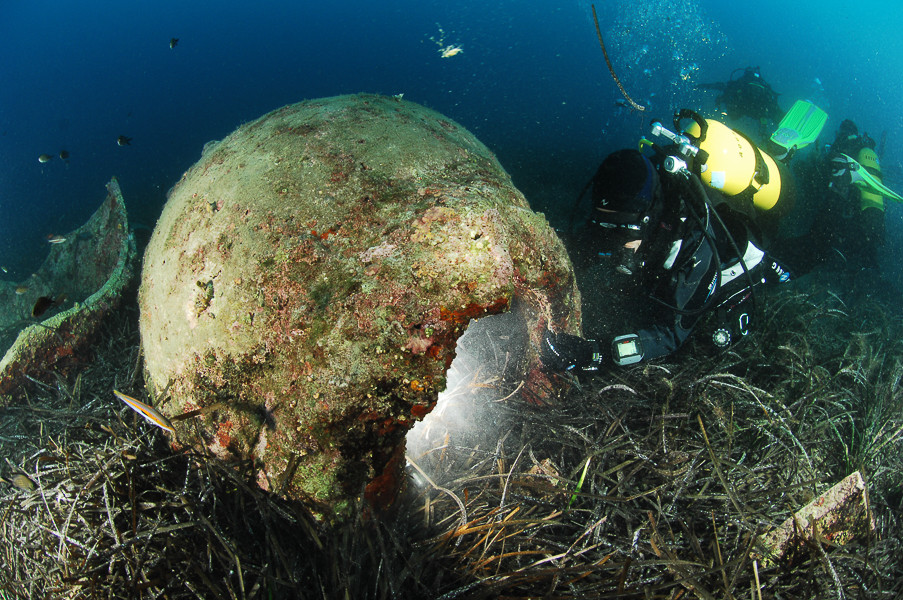
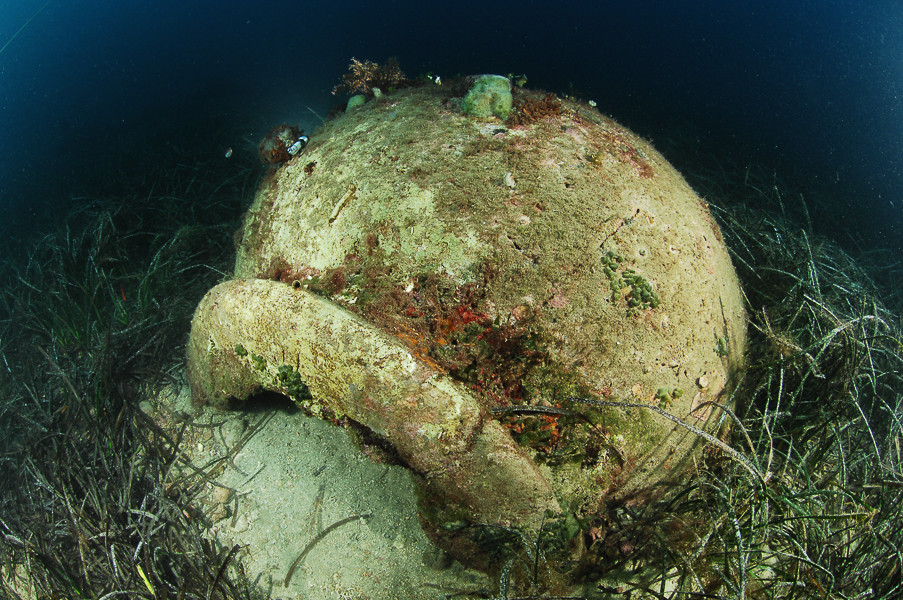
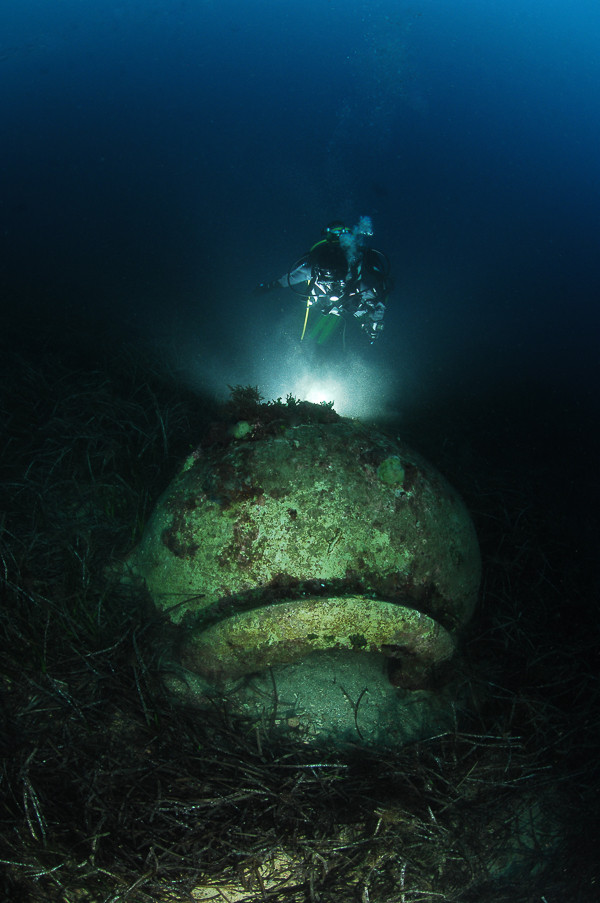
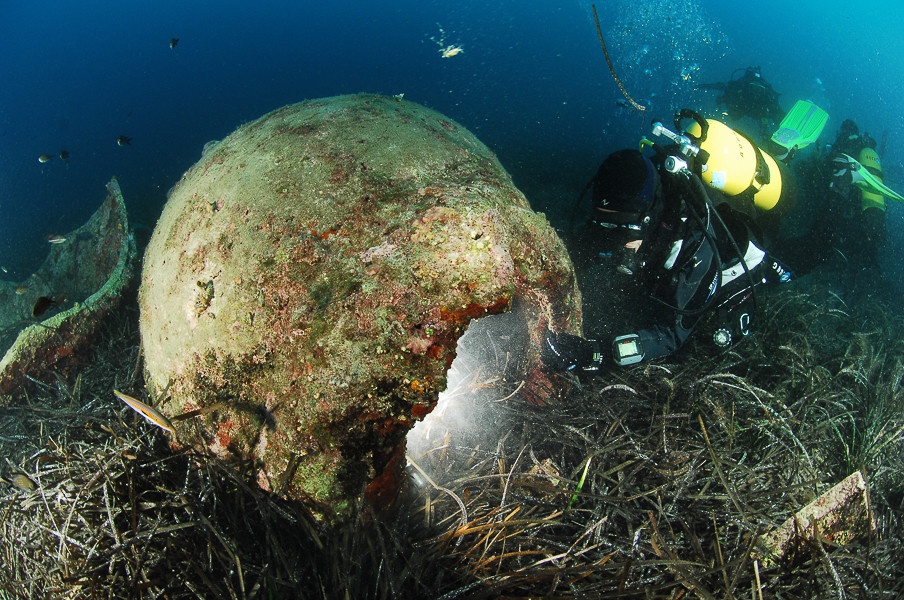
 The investment is co-financed by the Republic of Slovenia and the European Union from the European Regional Development Fund.
The investment is co-financed by the Republic of Slovenia and the European Union from the European Regional Development Fund.  H2O Globe BETA
H2O Globe BETA